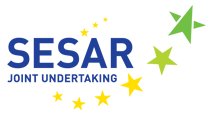
As the worlds two most complex airspace blocks Europe and the United States develop new, modernised ATM
systems, the question of their interoperability becomes
paramount. Global interoperability is an essential goal
when planning the development of ATM air/ground
applications and systems and is consequently one of the key requirements of SESAR.
 This article originally appeared in the 1st edition of the SESAR Magazine - follow link to view magazine
SESAR, Europes ATM modernisation programme takes place in the context of the International Civil Aviation Organisations (ICAO) Global ATM Operational Concept,
which provides governments and industry with objectives for the design and implementation of ATM and supporting communication, navigation and surveillance systems.
Working together on a global scale early in the life-cycle of a new concept or technology is the only way to achieve effective and efficient coordination, explains Peter Hotham, Chief Architect of the SESAR Joint Undertaking (SJU). The SJU and its member organisations are already in close contact with ICAO and aviation authorities around the world, as well as standardisation bodies such as EUROCAE and RTCA, to inform them of the technology and procedures we are developing in the framework of SESAR. This is set to continue as SESAR development gathers pace.
This article originally appeared in the 1st edition of the SESAR Magazine - follow link to view magazine
SESAR, Europes ATM modernisation programme takes place in the context of the International Civil Aviation Organisations (ICAO) Global ATM Operational Concept,
which provides governments and industry with objectives for the design and implementation of ATM and supporting communication, navigation and surveillance systems.
Working together on a global scale early in the life-cycle of a new concept or technology is the only way to achieve effective and efficient coordination, explains Peter Hotham, Chief Architect of the SESAR Joint Undertaking (SJU). The SJU and its member organisations are already in close contact with ICAO and aviation authorities around the world, as well as standardisation bodies such as EUROCAE and RTCA, to inform them of the technology and procedures we are developing in the framework of SESAR. This is set to continue as SESAR development gathers pace. It is evident that harmonisation is necessary to ensure the same aircraft can safely fly throughout the world with a single airborne equipment interoperable with any ground ATM system. This is also one of the key requirements towards new air traffic management systems from airspace users.
Interoperability requires internationally agreed standards and SESAR will deliver the technical basis for defining them
through ICAO SARPs (Standards and Recommended Practices) and coordinated industry standards. The existence of such common standards will also lower costs for the manufacturing industry which will be able to design equipment for a global market.
During the ATCA Convention in October 2009, J. Randolph Babbitt, FAA administrator, underlined the importance of interoperability for the NextGen programme. We must make sure that interoperability is at the order of the day, said Mr. Babbitt and continued, The Obama Administration and Secretary LaHood are enthusiastic about the potential for international linkage, such as the links between NextGen/SESAR. Currently, a memorandum of cooperation between the FAA and the European Community on cooperation in basic ATM research is being prepared covering among others the areas of information management, trajectory management, CNS and airborne interoperability, environmental issues, etc. We seek further meaningful alignments between NextGen and SESAR as we move forward, while at the same time we have also started to cooperate with other regions in the world facing similar ATM challenges now or in the foreseeable future, says Peter Hotham.
We have to recognise that different regions of the world can have very significant differences in the way they organise air traffic management. It thus may make little sense to try and have the same solutions applied everywhere. Interoperability must therefore be achieved in both the technical (system) and the operational (common procedures) dimensions.
This approach will allow deployment of an adaptable and scalable solution to the ATM system, which can be equally applied across a wide range of airborne platforms, airspace users, airports and ANSPs (including the Military) and permit regional solutions in the framework of the overall target concept. There are of course areas where interoperability can only be achieved through the adoption of common standards at a global level. For example, the implementation of air to air exchanges to enable ASAS applications and collision avoidance safety-nets require global harmonisation of both the equipment and procedures to ensure the safe and efficient implementation of these concepts.
Projects across the SESAR work programme, together with coordination initiatives at the SJU level, will ensure that SESAR has an effective working relationship with our international partners in the US and the rest of the world. SESAR developments recognise the need for a global view of these developments while ensuring the specific European needs are met.
SESAR was created to make a real difference for aviation in Europe, with clear capacity, safety, economic and environmental targets to be achieved, and avoid a situation in Europe where the current system fails to meet the demands from its customers and the community at large. SESAR will find a solution within a global perspective with a view to offering an equally appropriate response, once these issues arise, elsewhere in the world.


.jpg)





.png)